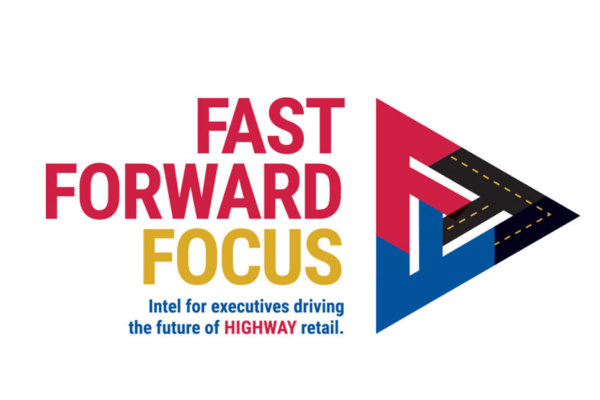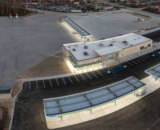The truckstop and travel plaza industry has a long history of adapting to its customers’ needs, and there are several equipment trends that could affect what drivers need while on the road. During NATSO’s 2020 FastForwardFocus, Lisa Mullings, NATSO CEO, and Darren Schulte, NATSO’s vice president of membership, sat down to discuss the trends that could shape truckstop and travel plaza operators’ futures.
Rise of the Electric Pickup Truck
Schulte said the rise of the electric pickup truck could increase charging demand and alter parking lot layouts. “A lot of people think the tipping point for EVs is when Ford rolls out the electric F150. If one of every nine sold went to EV, that would significantly impact the EV landscape,” he said. “If you’re able to have a pickup truck that has the transmission and the capability to tow something without losing significant mileage, there may be some folks that switch over.”
Pickup trucks often pull other equipment, such as a boat or a trailer. “If someone pulls up pulling a trailer, they aren’t going to unhook the trailer to charge the truck,” Schulte said. “How will that impact future design and layout?”
Average Length of Haul is Decreasing
Within the trucking industry, the average length of haul is decreasing, which could cause a decline in the need for showers, parking or scales. “The Journal of Commerce said the 24 highest volume truckload lanes in the U.S. are less than 500 miles,” Mullings said. “ATRI looked at the number of trips under 100 miles. That shifted from 7.5 percent in February to 18.2 percent in early April.”
While some of that shift was due to COVID-19, Mullings said the regional movement of goods is increasing for a number of reasons. Schulte noted that the number of new trucks being built without sleeper cabs has increased, and Mullings said light- and medium-duty truck sales have increased. Class 4 sales are up 75 percent year over year, Class 5 is up 28 percent and Class 6 is up about 17 percent. However, Class 7 sales are down by about 31 percent and Class 8 is down by 37 percent. “That is all telling us there is this incredibly boosted demand for faster local deliveries,” she said.
More RVs on the Road
Mullings also noted that the number of RVs on the road is on the rise as people are retiring and people travel via the nation’s highways.
So, What Does that Mean for NATSO Members?
Schulte said new entrants to the market are ensuring they have diesel in all of their fueling lanes and have auto diesel up front. Operators are designing the inside of stores for speed and convenience. More and more NATSO members are considering adding RV parking and camping to their layouts, for example, Schule said.
He recommends operators simply watch customers and ask them questions about what they need and want. “Really understand how they shop,” he said. “How can you make it easy?”
Subscribe to Updates
NATSO provides a breadth of information created to strengthen travel plazas’ ability to meet the needs of the travelling public in an age of disruption. This includes knowledge filled blog posts, articles and publications. If you would like to receive a digest of blog post and articles directly in your inbox, please provide your name, email and the frequency of the updates you want to receive the email digest.


